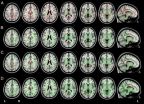(Press-News.org) If greenhouse-gas emissions continue to rise, glaciers in the Everest region of the Himalayas could experience dramatic change in the decades to come. A team of researchers in Nepal, France and the Netherlands have found Everest glaciers could be very sensitive to future warming, and that sustained ice loss through the 21st century is likely. The research is published today (27 May) in The Cryosphere, an open access journal of the European Geosciences Union (EGU).
"The signal of future glacier change in the region is clear: continued and possibly accelerated mass loss from glaciers is likely given the projected increase in temperatures," says Joseph Shea, a glacier hydrologist at the International Centre for Integrated Mountain Development (ICIMOD), Kathmandu, Nepal, and leader of the study.
The glacier model used by Shea and his team shows that glacier volume could be reduced between 70% and 99% by 2100. The results depend on how much greenhouse-gas emissions continue to rise, and on how this will affect temperature, snowfall and rainfall in the area."Our results indicate that these glaciers may be highly sensitive to changes in temperature, and that increases in precipitation are not enough to offset the increased melt," says Shea. Increased temperatures will not only increase the rates of snow and ice melt, but can also result in a change of precipitation from snow to rain at critical elevations, where glaciers are concentrated. Together, these act to reduce glacier growth and increase the area exposed to melt.
Glaciers in High Mountain Asia, a region that includes the Himalayas, contain the largest volume of ice outside the polar regions. The team studied glaciers in the Dudh Kosi basin in the Nepal Himalaya, which is home to some of the world's highest mountain peaks, including Mt Everest, and to over 400 square kilometres of glacier area. "Apart from the significance of the region, glaciers in the Dudh Kosi basin contribute meltwater to the Kosi River, and glacier changes will affect river flows downstream," says Shea.
Changes in glacier volume can impact the availability of water, with consequences for agriculture and hydropower generation. While increased glacier melt initially increases water flows, ongoing retreat leads to reduced meltwater from the glaciers during the warmer months, with greatest impact for the local populations before the monsoon when rainfall is scarce. Glacier retreat can also result in the formation and growth of lakes dammed by glacial debris. Avalanches and earthquakes can breach the dams, causing catastrophic floods that can result in river flows 100 times greater than normal in the Kosi basin.
To find out how glaciers in the region will evolve in the future, the team started by using field observations and data from local weather stations to calibrate and test a model of glacier change over the past 50 years. "To examine the sensitivity of modelled glaciers to future climate change, we then applied eight temperature and precipitation scenarios to the historical temperature and precipitation data and tracked how glacier areas and volumes responded," says study co-author Walter Immerzeel of Utrecht University in the Netherlands.
Part of the glacier response is due to changes in the freezing level, the elevation where mean monthly temperatures are 0°C. "The freezing level currently varies between 3200 m in January and 5500 m in August. Based on historical temperature measurements and projected warming to the year 2100, this could increase by 800-1200m," says Immerzeel. "Such an increase would not only reduce snow accumulations over the glaciers, but would also expose over 90% of the current glacierized area to melt in the warmer months."
The researchers caution, however, that the results published in The Cryosphere should be seen as a first approximation to how Himalayan glaciers will react to increasing temperatures in the region. Patrick Wagnon, a visiting scientist at ICIMOD and glaciologist at the Institut de Recherche pour le Développement in Grenoble, France, says: "Our estimates need to be taken very cautiously, as considerable uncertainties remain." For example, the model simplifies glacier movements, which impact how glaciers respond to increases in temperature and precipitation.
But the researchers stress in the paper that "the signal of future glacier change in the region is clear and compelling" and that decreases in ice thickness and extent are expected for "even the most conservative climate change scenario."
INFORMATION:
Please mention the name of the publication (The Cryosphere) if reporting on this story and, if reporting online, include a link to the paper (TBA) or to the journal website (http://www.the-cryosphere.net).
The psychological strain of being told that you may have breast cancer may be severe, even if it turns out later to be a false alarm. This is the finding of new research from the University of Copenhagen, which has just been published in the scientific journal Annals of Family Medicine. Researchers call for improving screening accuracy, thus reducing the number of false-positive mammograms.
It was a false alarm. You don't have breast cancer. This ought to be a happy message for women who have been through a mammography screening which initially showed signs of something ...
OAK BROOK, Ill. - Degeneration of the white matter of the brain may be an early marker of specific types of Alzheimer's disease (AD), including early-onset AD, according to results of a new study published in the journal Radiology.
"Alzheimer's is a gray matter disease," said Federica Agosta, M.D., Ph.D., co-author of the study conducted at the Neuroimaging Research Unit, San Raffaele Scientific Institute in Milan, Italy. "However, white matter damage has a central role in how the disease strikes and progresses."
AD is an irreversible, progressive brain disease that ...
The first practical guide to ensure the safe use of flavourings in e-cigarettes has been published (Regulatory Toxicology and Pharmacology DOI: 10.1016/j.yrtph.2015.05.018).
E-cigarettes and other vaping products contain a nicotine-based liquid that is vapourised and inhaled. There is no combustion so the user inhales vapour, not smoke. This means that e-cigarettes deliver nicotine without smoke toxicants. However, some in the public health community still have expressed concerns over the potential health impacts of flavourings used in e-cigarettes.
This is why the ...
The spinal tumor grew back. Even though the 16-year old patient endured surgery a year earlier to remove and diagnose the lesion, it was back and its cause unknown. Determined to identify the tumor tissue and set the patient on an appropriate treatment regimen, Albert Telfeian, M.D., a neurosurgeon at Rhode Island Hospital and Hasbro Children's Hospital, performed the first reported case of extracting the tumor endoscopically while the patient was awake and under a local anesthetic. The minimally invasive procedure enabled accurate diagnosis, which evaded multiple physicians ...
New research published today in Diabetologia (the journal of the European Association for the Study of Diabetes) indicates that consuming greater quantities of dietary fibre reduces the risk of developing type 2 diabetes.
Over 360 million people worldwide are estimated to be affected by diabetes, and this number is projected to increase to more than 550 million by 2030, with serious consequences for the health and economy of both developed and developing countries. While previous research has found an association between increased dietary fibre intake and a reduced risk ...
Professor Teppo Järvinen and colleagues say drug treatment "can achieve at best a marginal reduction in hip fractures at the cost of unnecessary harms and considerable waste of monetary resources." The article is part of The BMJ's Too Much Medicine campaign -- to highlight the threat to human health and the waste of resources caused by unnecessary care.
Worldwide, about 1.5 million hip fractures occur each year. They impose an enormous burden on healthcare resources and, with a growing elderly population, their incidence is predicted to rise.
Before the late ...
The results show that pills containing one of the newer types of progestogen hormone (drospirenone, desogestrel, gestodene, and cyproterone) are associated with an increased risk of VTE than pills containing older progestogens (levonorgestrel and norethisterone).
The researchers, based at the University of Nottingham, say this is "an important clarifying study" that "has sufficient power to provide reliable comparative findings for different formulations of combined oral contraceptives."
About 9% of women of reproductive age worldwide use oral contraceptives, rising ...
James Rucker, a psychiatrist and honorary lecturer at the Institute of Psychiatry, Psychology and Neuroscience, King's College London, describes how these drugs "were extensively used and researched in clinical psychiatry" before their prohibition in 1967.
He explains that many trials of psychedelics published before prohibition, in the 1950s and 1960s, suggested "beneficial change in many psychiatric disorders".
However, research ended after 1967. In the UK psychedelic drugs were legally classified as schedule 1 class A drugs - that is, as having "no accepted medical ...
PHILADELPHIA -- HDL is the 'good cholesterol' that helps remove fat from artery walls, reversing the process that leads to heart disease. Yet recent drug trials and genetic studies suggest that simply pushing HDL levels higher doesn't necessarily reduce the risk of heart disease. Now, a team led by scientists from the Perelman School of Medicine at the University of Pennsylvania has shown in a large, forward-looking epidemiological study that a person's HDL function -- the efficiency of HDL molecules at removing cholesterol -- may be a better measure of coronary heart disease ...
A risk gene for dyslexia is associated with impairments in visual motion detection, according to a study published May 27 in The Journal of Neuroscience. Mutations in the gene DCDC2 have previously been associated with dyslexia, and this study found that dyslexics with an altered copy of the gene are unable to detect certain types of visual motion.
The researchers used a series of visual tests to compare typical readers with two groups of dyslexics -- one with and one without a specific deletion in the DCDC2 gene.
The subjects were presented with images of patterned ...

